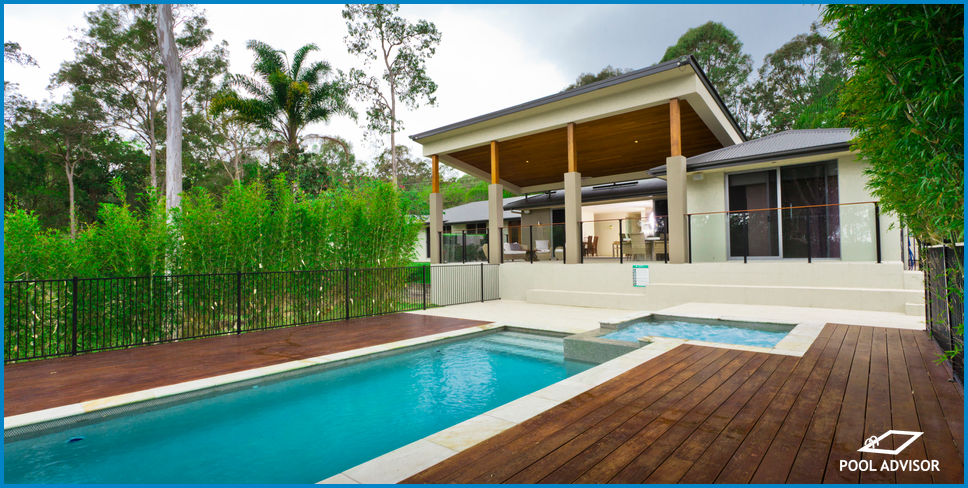
How To Change A Salt Water Pool To Mineral Pool? (+ Costs)
Amongst pool owners, saltwater pools have become increasingly popular over regular chlorine pools for many reasons. Although saltwater pools are very popular, many pool owners are beginning to recognise the numerous health benefits of owning a mineral pool.
In this article, we will discuss how to change a saltwater pool to a mineral pool. We will also cover the cost of converting a saltwater pool to a magnesium pool to give you an estimated budget for your project.
Can You Change A Salt Water Pool To A Mineral Pool?
Yes, saltwater pools can be changed to mineral pools. In many cases, you will not even need to purchase new equipment to make this change.
By simply lowering the amount of salt in your pool and replacing some of this with other minerals, you can convert your saltwater pool to a magnesium pool very easily.
Whether it’s the right choice for you or not is another story. Check out this article on saltwater vs mineral pools and this one on mineral pool pros and cons.
How To Change Salt Water Pool To Mineral Pool
Partially Draining And Refilling Your Pool
The most difficult step when converting a saltwater pool to a mineral pool is partially draining and refilling the pool with fresh water.
Most saltwater pools have a salinity of 2,700-3,400 ppm, and other dissolved solids are likely to be present in your pool alongside the salt.
Before introducing new minerals to your pool’s water, you will need to decrease the TDS (total dissolved solids) in your pool to at least 1,500 ppm.
In many cases, pools will need to be drained substantially and then refilled with fresh water. Take extreme caution when draining this much water from your pool.
In-ground pools are prone to pool-popping, a phenomenon that occurs when the loss of water pressure causes your pool’s lining to implode. This can cause severe cracks and leaks in your pool’s shell, so it should be avoided at all costs.
You may have to remove and replace smaller portions of water at once to prevent causing structural damage to your pool. This pool salt calculator can help you work out how much water to drain and refill.
Adding Magnesium And Minerals
Once your pool’s water has been refreshed and has a TDS reading below 1,500 ppm, you can begin to add minerals to your pool. You should always use minerals specifically designed for swimming pools.
Mineral salts that are not designed for pools may contain harmful chemicals, soaps, or fragrances, all of which can lead to water chemistry issues.
The ideal level of minerals in a mineral swimming pool range from 3,500-4,500 ppm. Slowly add bags of minerals to your pool while the pump is running in order to increase your TDS readings until they fall within this range.
In a pool of 50,000L, it typically takes around 22 x 10kg bags of pool minerals to raise the TDS readings within the appropriate range. Additional dosage information may be provided on the packaging of your pool minerals.
Always add minerals in small doses to avoid overdosing the pool. It is important to allow time for each dose of minerals to dissolve completely before adding more, as the only way to remove excess minerals is by draining water and refilling.
Cost Of Converting Salt Water Pool To Magnesium
The biggest costs associated with converting saltwater pools to magnesium pools are the costs associated with draining and refilling your pool and the initial cost of the minerals.
Draining & Refilling Costs
The costs related to refilling your pool with fresh water can vary widely depending on where you are located. To get an estimate, use this calculator to work out how much water you will need to drain and refill.
Then, figure out how much your water provider will charge for this many litres of water. This figure can be higher in some areas, especially in times of drought, while this figure may be negligible in cases where your pool is fed with private bore water.
Mineral Costs
In a pool of 50,000L, it will take approximately 22 x 10kg bags of minerals to reach a TDS reading of 3,500-4,500 ppm.
With an average cost of $50 per bag of minerals, the initial dose of minerals for a mineral pool of this size could cost around $1,100, making this easily the largest expense when converting your saltwater pool.
In some instances, your existing chlorinator will need to be replaced, which could sharply increase your conversion costs. New chlorine generators cost $700-$2,500 on average.
It should be noted that most saltwater chlorine generators operate fine in mineral water, but it’s worth confirming this with the product manual or manufacturer before getting started.
Conclusion
Converting your saltwater pool to a mineral pool is not always an easy process.
Draining and refilling your pool can be time-consuming, and the initial cost of minerals for a new mineral water pool can be higher than expected. Luckily, most pool machinery from your saltwater pool will work well in a mineral water pool.
Do you have any questions about changing saltwater pools to mineral pools? Get in touch with us in the comments section, we’d love to help answer any remaining queries you may have!

Louis
A chemical engineer by trade, Louis is committed to debunking myths in the pool industry by explaining the underlying chemistry and making it accessible to all.
